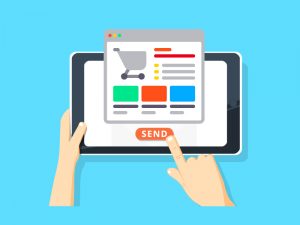Cart Abandonment Best Practices
 Did you know that, on average, between 65% and 75% of Web site visitors who place products into their online shopping carts abandon those carts and never make the purchase? And, as the holiday season grows nearer, the cart abandonment rates can grow as high as 90 percent.
Did you know that, on average, between 65% and 75% of Web site visitors who place products into their online shopping carts abandon those carts and never make the purchase? And, as the holiday season grows nearer, the cart abandonment rates can grow as high as 90 percent.
If you have an e-commerce site, do you know your cart abandonment rate – and how much potential business you’re leaving on the table each and every day?
The easiest way to determine your cart abandonment rate – the ratio between how many people place items in the cart vs. how many actually buy – is by checking Google Analytics or whatever analytics package you use.
But, you may ask, if these customers didn’t make the purchases the first time around, what will cause them to change their minds and return?
The answer is that by using a “drip” of carefully timed emails, called “cart abandonment triggers,” you can recover 10-20 percent of the money you almost lost. Here’s how to do it in five easy steps:
1. Understand the situation. Since the cart abandoners almost purchased, they are some of your best prospects for conversion from window shoppers to clients. There are many possible reasons why they didn’t buy – and it’s not necessarily because they no longer want the item. Maybe their phone rang … or the dog barked … or dinner was on the table … or the bathroom called. Here is what some 3,000 consumers told Forrester Research:

2. Consider using “cart abandonment triggers.”It’s an advanced email marketing technology – available from several enterprise-level vendors – that is one of the best ways to recapture your abandoners. Essentially, it enables you to send smart email reminders with a predefined frequency and with different messaging and promotions. You’ll need to add some custom tracking code to your website to enable the email marketing system to track visitors who enter your cart and whether they purchased.
3. Timing is everything. In order to maximize your conversions – from browsers to buyers – the best practice is to use three email “touches” after an abandonment. But, you’ll want to act fast. It’s important to send the first reminder email less than an hour after the abandonment so that your brand is still top of mind. Tests have shown that waiting 24 hours to send your first touch may negatively impact your conversion by more than 50 percent. The second email should be sent 24 hours after the first, and the third email four to six days later.
4. Be careful. You don’t want to antagonize a potential customer. If the abandoner purchases after the first email, you want to make sure your technology excludes the buyer from the second and third emails.
Similarly, don’t try to emulate an aggressive salesperson with your first message. Instead of saying “Hey, what happened to you?” a better approach is, “Oops, we noticed you left these items in your basket. Click here to complete your purchase or browse for more products.” Sound like you’re doing them a favor by reminding them that they didn’t complete their purchase. The second and third emails can slowly turn on the charm and include an incentive or promotion like free shipping or a discount on another item. But be careful not to train your customers to abandon their carts on purpose in order to get that incentive. Vary the incentives and make them predictable.

If you do it right, people won’t resent or be offended by your reminders and you should find that the open and click-through rates are much higher than on regular emails. Open rates of 40-60 percent are common and click-through rates are usually 15 percent with click-to-open rates higher than 35 percent.
5. Maximize your results. Be sure to test for different subject lines in your emails and make certain your brand is noticeable in the “from” line.
To maximize click-throughs, test various message elements, such as different layout approaches, a mix of images versus text, promo buttons and pictures of the actual products your customers left in the cart. In all cases, have a clear “reminder button” to complete the purchase that links directly to the cart.
The best thing about cart abandonment strategies is that they are relatively inexpensive. If you use an enterprise-level system, there’s a nominal monthly cost and a one-time cost to set up the cart abandonment functionality. Or, you can go to a third-party service provider and buy a software package that your information technology person can integrate into your email marketing system. Typically, it costs $500 per month or more.
Btw…if you are using an off the shelf e-commerce system such as Magento the integration for cart abandonment with OpenMoves may be even easier with our Magento connector.
But whatever it costs, you’re spending much less than the sales you lose from cart abandonment. For example, if 1,000 people abandon your product and the average cost of that product is, say, $500, getting back 10%, 20% or even 50% means retrieving a lot of money. And the effort to bring these clients back is almost negligible because, once you’ve set up the service, it functions automatically.
Bottom line: if you have an e-commerce site, using cart abandonment emails is a no-brainer – for a nominal effort and minimal cost, you can increase your sales and profits many times over! Contact us to evaluate the return you may see from using this amazing technology.












